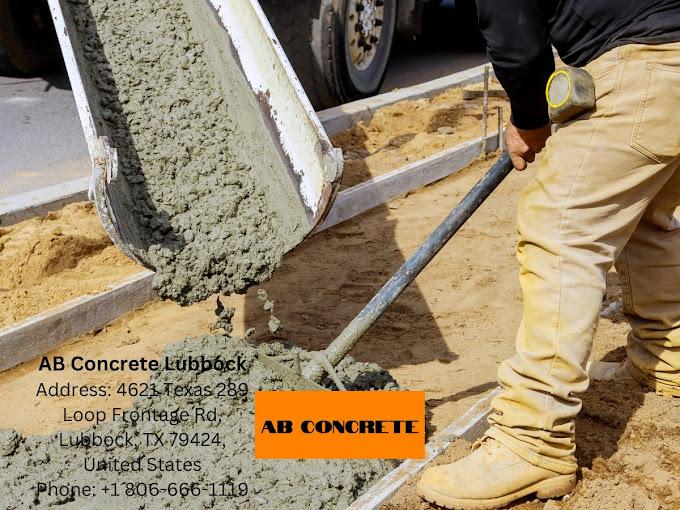Introduction: In a time in which environmental issues are on the agenda and sustainable building practices have been deemed essential. Concrete is among the most extensively employed building materials around the world concrete plays a major part in ensuring a more sustainable future. Concrete has numerous advantages which are compatible with sustainability objectives that include energy efficiency durable, recyclability, and a low environmental impact. The article we'll look at the essential role of concrete as a sustainable material for construction, and the ways it can contribute to a more sustainable and healthier future.
- The energy efficiency of concrete is renowned for its exceptional thermal properties, offering natural insulation while reducing the need for a lot of cooling or heating. This natural energy efficiency can help reduce energy use and reduce environmental impact of constructions. Concrete's thermal mass is high, allowing it to encase and store heat, which helps in regulating temperatures inside and decreasing the dependence of mechanical devices. Thus, buildings made of concrete can make significant energy savings, and also contribute to greener buildings.
- Durability and longevity Durability and Longevity: One of the main factors that sustains sustainability is its endurance, and concrete is a leader in this area. Its strength and resilience makes it a sturdy material that is able to withstand extreme environmental conditions, earthquakes and the test of time. Concrete structures can last for a long time and can be used to reduce the need for periodic repairs or replacing. This durability not only conserves resources but also decreases the amount of waste generated and makes concrete an environmentally sustainable option to build sustainable structures.
- Recyclability and reuse Concrete is a recyclable material. When it is renovated or demolished concrete is crushed and turned into aggregate. It can be used later as a base material to make new concrete or as a material for road construction. This process, referred to as concrete recycling lowers the need for new material, preserves natural resources, and decreases the amount of waste that is disposed. Concrete structures can be reused or modified to various uses, thus extending their lifespan and reducing environmental impact.
- Low Environmental Impact Concrete has a low environmental impact when compared against other materials for building. The primary components of concrete, namely cement, aggregates, and water, can be sourced locally, reducing transportation-related emissions. Additionally, advances in the production of concrete including the utilization of supplementary cementitious substances (SCMs) such as fly ash and slag can dramatically lower the footprint on carbon emissions of concrete. With the inclusion of SCMs, quantity of cement needed is decreased, leading to less greenhouse gas emissions that are associated with the production of cement.
- Stormwater Management: Concrete could help in effective stormwater management for urban regions. By using pervious concrete or concrete that has porosity, rainfall is able to get into the soil which reduces runoff and eases the burden on infrastructure for stormwater. Pervious concrete lets rainwater flow over the concrete, removing out harmful substances and recharges groundwater. When permeable concrete is used in construction projects and environmentally sustainable water management is possible by reducing the burden on local water infrastructure and reducing the chance of flooding.
- LEED certification: Concrete's sustainable qualifications are further demonstrated through the compatibility of concrete with Leadership in Energy and Environmental Design (LEED) certification. LEED is a worldwide acknowledged rating system that assesses the performance of buildings in terms of environmental sustainability. Concrete construction could contribute to LEED points across a range of categories like energy efficiency materials and resources as well as indoor quality. With its energy-efficient qualities to its recycling of materials, concrete plays crucial roles in helping buildings attain LEED certification and meet strict sustainability standards.
- Carbon Capture and Storage Concrete is a viable option to outdo its environmental performance currently through new technologies such as carbon capture and storage (CCS). CCS involves the capture of CO2 (CO2) emission from industrial operations and permanently storage in order to stop release in the environment. When you implement CCS techniques in the production of cement and cement production, concrete's carbon emissions could be reduced by making it more sustainable and aiding the global effort to combat climate change.
Conclusion: The importance of concrete in sustainable construction can't be overstated. Its energy efficiency and durability, as well as its recyclability, low environmental impact and stormwater management capabilities and its compatibility with LEED certification are the reasons concrete is an important substance in the construction of a sustainable future. When we use concrete as a construction material, you are able to build eco-friendly structures that are not only sustainable but also provide the long-term social and economic advantages. As we work towards more sustainable buildings concrete will play an important role in creating a sustainable future for the generations to follow.
